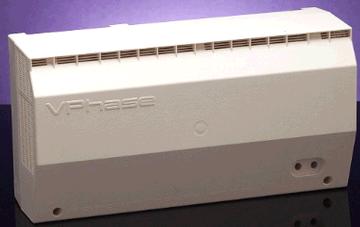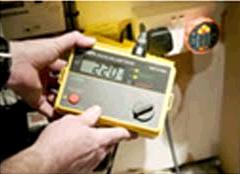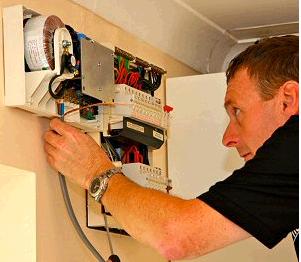In the UK, the voltage of mains electricity supplied to homes is approximately 242 VAC (Volts AC), but household appliances sold within the European Union (including the UK) must be designed to operate reliably when supplied with a voltage within the European statutory range – currently 207 to 253 VAC. When supplied with lower voltages (than the standard 245 VAC) appliances use less energy while functioning perfectly – sounds great, but how can you reduce the mains voltage?
Voltage Optimisation
Voltage optimisation has been used for many years in office buildings, factories, and other commercial sites in order to reduce energy usage (and of course cost). Some of these systems simply reduce the incoming mains voltage by a fixed amount – e.g. 20, 25, or 30 Volts, which is fine if you know that the mains supply is high enough and stable. Unfortunately, the actual range of supply voltages in the UK can vary – particularly in rural locations – and so this approach would not be suitable for domestic voltage optimisation.
The alternative approach is an optimiser which takes in mains voltage at one side, and outputs a fixed lower voltage from the other side which the feeds the property to be powered. This is the approach taken by the designers of VPhase, the first domestic use (single phase) voltage optimiser to come to market.
VPhase VX1 Voltage Optimiser

The VPhase VX1 is designed to reduce mains voltage to a fixed level of 220 VAC – a reduction of around 10% for most homes. This in turn can offer a reduction in electricity bills for the home in which it is installed of around 10% It is housed in a unit smaller than the electricity consumer unit in the home, and fixed to the wall next to it.
If the utility supply voltage sags below 220 VAC, the VX1 voltage optimiser is automatically bypassed, so the property is always supplied with 220 VAC when the mains voltage is greater than 220 VAC, and directly with mains voltage if the mains voltage falls to below 220 VAC – i.e. if there is a brown out, the VPhase VX1 will not result in an even lower voltage getting to your appliances.

Electricity Savings with VPhase
The actual savings possible depend on the appliances in use. Electricity powered heating for example would cost exactly the same to run but take 10% longer to heat the air/water to the target temperature. However in testing the VPhase reduced electricity consumption by 17% for fridges and freezers, 15% for lighting (10% of the latest energy saving light bulbs), and 3-10% for TV’s, HiFi’s, and other entertainment systems.
Appliances with motors can use 17% less power (of the power which actually goes to the motor) – i.e. the motor in the washing machine will use less power, but the heating element will use the same amount of power, but take 10% longer to heat the water). In testing in typical homes, reductions in electricity bills of 8-11% have been found, which represent possible annual cash savings of £50 to £100+.
article correction – 28 Sept 2010
While it is correct that a heating appliance (e.g. electric kettle) will use the same total amount of energy* whatever the input voltage, if the voltage is reduced from 240 to 220 V (a reduction of about 8.3%), because power is proportional to voltage^2 across a resistive load, the corresponding *power* reduction is nearly 16%.
Time depends on power input not voltage, so it will hence take 16% longer to boil the kettle, not 8.3%. A 10% reduction in voltage would mean 19% longer.
(Taking it even further, halving the voltage would multiply the time by a factor of four).
*Assuming nothing is wasted by radiation/convection from its external surface while warming-up!Dr Tim Dennis, University of Essex
Since most people do not want their home (or in some cases water) to take 20% longer to be heated, when the VPhase is installed, the electric heating circuits are not connected to it.

Buying and Installing VPhase
The VPhase is available now priced at £250 + VAT plus the cost of installation. With a predicted working life of over 25 years, a VPhase should pay for itself and its installation in under 5 years, and continue to give savings from then on.
Any qualified electician can install the VPhase in an hour or two including testing etc. A short video which details the installation procedure is available here: VPhase Installation Video.
More VPhase Information
For more information on VPhase, click here to visit the official VPhase website.